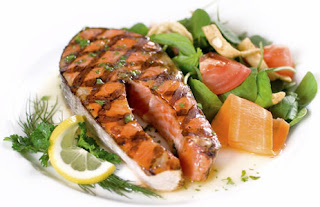For those of you who have made the switch to Paleo, and are not dairy intolerant, you may wish to consider going Primal... or, in other words, Paleo plus dairy...
Many paleo followers actually "cheat" in this direction by using butter as part of their "program". Even many lactose intolerant individuals (such as myself) find they have no problem with "fermented" organic dairy such as cottage cheese, sour cream, yoghurt, kefir, and normal cheese (whatever that is... lol). Raw milk from cows or goats can often be tolerated as well...
Oh, and did I forget to mention ICE-CREAM ???
It is important however, to first make the switch to Paleo BEFORE going Primal, as this sets the body in a ketotic state before having to deal with potential milk sugar related issues, among others. In doing so, there will not be confusion involved in determining dietary "boundaries". God I love my chocolate ice-cream... lol...
(editor's note:
Since posting this, I have received several comments which, since they are of value to the general layman, I will share with my readers...
Going "Primal", which is the addition of dairy products to the general paleo diet, has certain parameters which one needs to be aware of. "Dairy", in America, vs. elsewhere in the world, can be problematic, to say the least. Between the reality of "mass-production" factory farming, the feeding of dairy cattle grains, massive overuse of antibiotics, pasteurization, homogenization, etc., can contribute to dairy "intolerance" in many individuals that might not have occurred had the dairy been fresh, raw, from natural grass-fed dairy cows. In addition, if that were not complicated enough, there are numerous other factors that one needs to consider as well... are you allergic to a component of what the cow ate ? Are there genetic factors which predispose you to an allergic reaction ? Are there other contributing food intolerances as well ? What else is going on in your body ? This subject is not as "simple" as some would have you believe, and can take time, patience, and perseverance on your part to find the answers...)














